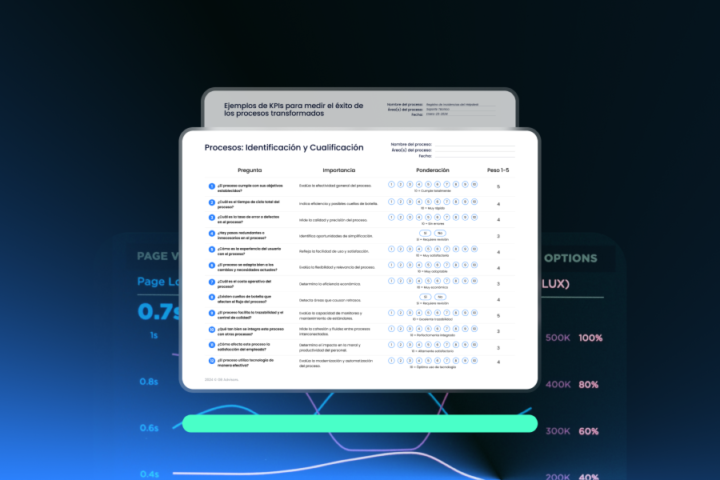 Service Level Agreements – or simply SLAs, are documents that define and collect the quality levels agreed between the interested parties in hiring outsourced services.
Service Level Agreements – or simply SLAs, are documents that define and collect the quality levels agreed between the interested parties in hiring outsourced services.
In recent times, SLAs have experienced an important upturn to particularly define terms and contracts for IT services. In this sense, we can properly sustain that SLAs have greatly contributed to good practices and excellence in delivering third-party services for IT and telecommunications. No wonder why the ITIL methodology devotes a good section to SLAs!
Likewise and in a broader sense, SLAs promote and pursue quality assurance and provide greater control for each interested party. This means, SLAs also are great organizers of tasks and responsibilities within the company that delivers the service, and for the one that receives it.
From the business perspective, we all supply and demand that they provide us with services. In other words, we are all customers and service providers even within the same company we work in. If we start from this principle, it’s worthy to create and establish adequate SLAs. And of course, doing so has implies knowing some hacks that we share with you to get the best out of your contracts.
Where to start with SLAs?
First of all, SLAs are based on quality indicators, or KPIs. This means that each SLA contract is intrinsically linked to a group of indicators that measure the relevance of each aspect. In this sense, they comply and assign a value for each indicator that is responsible for measuring the relevance of each activity in terms of criticality; weight; periodicity; etc.
 In that sense, ideal terms to create optimal SLAs describe deadlines; quality; objectives; etc. For this reason, it is essential that SLAs have the technical profiles of the parties.
In that sense, ideal terms to create optimal SLAs describe deadlines; quality; objectives; etc. For this reason, it is essential that SLAs have the technical profiles of the parties.
Also, as SLAs contracts govern a professional relation to certain time under certain clauses; they generally are backed up by a broader legal framework. However, as per being contracts of managerial nature; SLAs tend to restrict their scope to the limits of the companies that sign them.
In summary, the SLAs begin once we determine two fundamental aspects: KPIs and Legal Framework. So, once we have highlighted this, we move forward in the terms of your SLAs.
1. Clarify the effective date, and highlight the binding force of honoring SLAs.
Under the risk of being redundant and even sound pretty obvious, truth is that it’s good to make absolutely clear these points to start with the right foot, as SLAs are more complex and cover more aspects than a simple buy-sell action.
Specifically, the entry into force of SLAs are always subjected to their internal clauses. For example, let’s say that your company provides an orientative service over a particular; and from that service, it’s very likely that your client hires other services. As you both are still in the negotiation phase, the actual validity of such SLA will be strictly enforced once negotiation concludes with the definition of the scope of work (SOW).
 Likewise, there are contracts whose complexity includes the overlapping of several sub-contracts. There is also the case that the entry into force of one of them requires the previous completion of another or other contracts. In all such cases, the periods of entry into force and completion of each of them must be clarified in the clauses.
Likewise, there are contracts whose complexity includes the overlapping of several sub-contracts. There is also the case that the entry into force of one of them requires the previous completion of another or other contracts. In all such cases, the periods of entry into force and completion of each of them must be clarified in the clauses.
Same, in each and every one of them, the parties are totally obliged to comply with SLAs. Signing the contract implies the acceptance of an agreement to be honored by all the involved parties, without excuses.
2. Make them flexible. Give some slack and comprehend broader aspects from those compiled in the KPIs.
Contrary to what we generally believe, KPIs are not the only indicators that determine the obligations of both, service provider and customer.
That is, although KPIs are an excellent starting point to frame your contracts; they are not the only aspects that delimit the actions and accessory obligations of the parties. If this is your case, describe those complementary activities and include them in your contracts.
3. Have plenty confidence to describe penalties, and extra bonuses.
In full agreement with the above pointed, your contracts should contemplate the negative aspects to save all the party from misunderstandings and difficult times. In this sense, try to describe in full detail what inconsistencies are, and what penalties they imply.
 Keep in mind two fundamental things that we also mentioned before: Regardless of the fact that most contracts tend to restrict their scope to the limits of the involved parties; they are also covered by the legal framework of the region(s) or country(ies) where they are signed in. So, they comprehend legal compensations for non-compliance.
Keep in mind two fundamental things that we also mentioned before: Regardless of the fact that most contracts tend to restrict their scope to the limits of the involved parties; they are also covered by the legal framework of the region(s) or country(ies) where they are signed in. So, they comprehend legal compensations for non-compliance.
However, compensations usually are pacted as fines with fix amounts agreed between the parties; and even with the termination of the signed contract. All these aspects must be negotiated in the initial phase.
Similarly, as simple courtesy and in the spirit of promoting a good relationship with your customers in the medium and long term; you should also include some concessions and prizes for extraordinary compliance within your clauses. They can be discounts; promotions; etc.
4. Review the terms of your SLAs, and allow yourself to give them continuous improvement.
Last but equally important and especially for contracts that extend over time and integrate new scopes; include special clauses that contemplate review procedures; expansion and redefinition of contract objectives.
Of course, this includes financial aspects (inflation adjustments and similar phenomena); the evolution of the technological maturity of the contracting party; changes in business models and technology; etc.
Again, we must leave room for evolution and growth specifically in areas as dominated by innovation as IT is.
Keep in mind that the Service Level Agreements – SLA are documents that, in addition to collecting and defining the agreed quality levels; they also serve as your rudder; map and destiny to direct of your services.
If like many companies, you need the advice of experts to correctly guide you for selecting the right technologies and services to fulfill your needs; you are in the right spot. Just leave your information here and we will contact you soon to provide you with the help you require.



